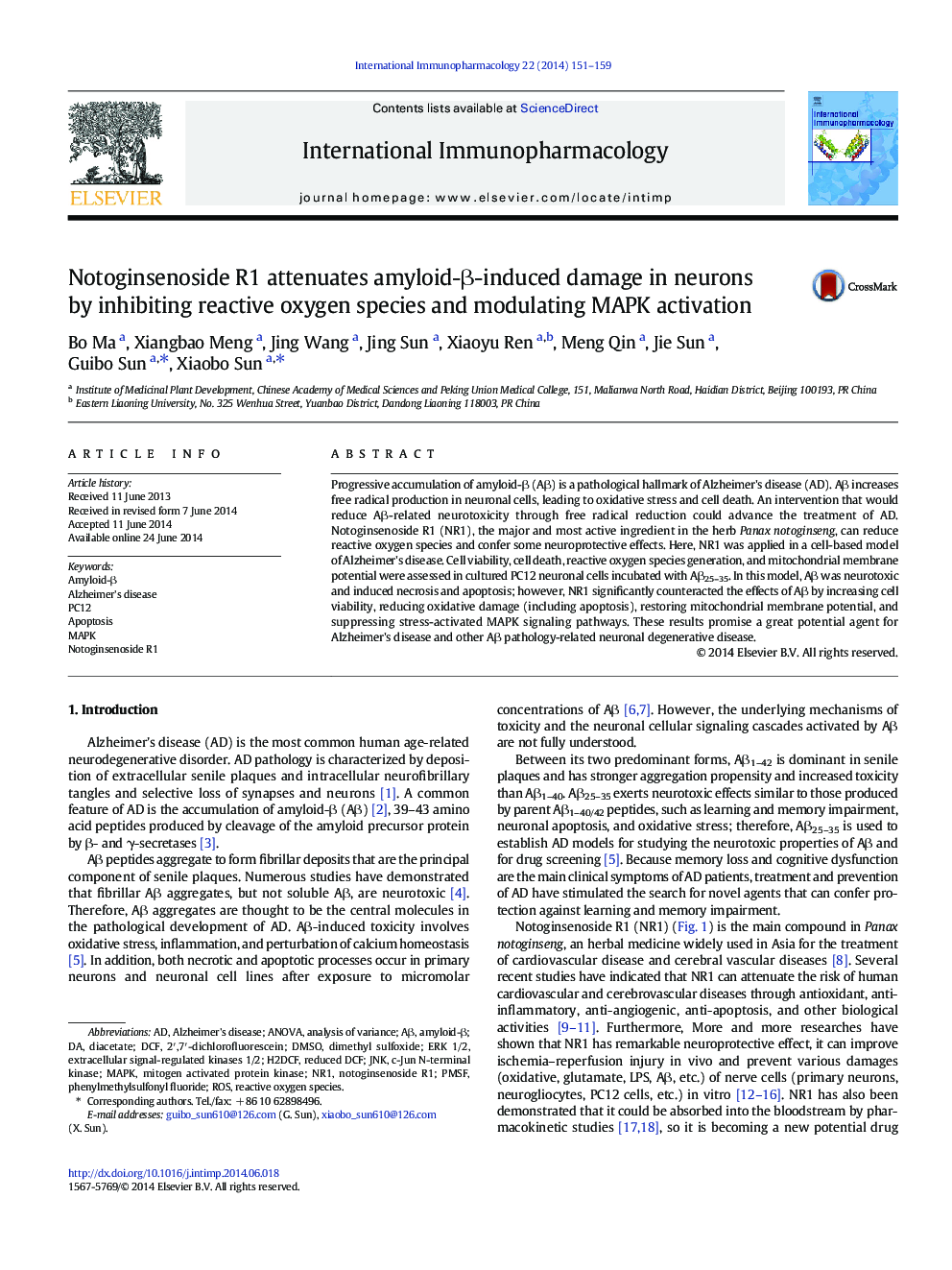| کد مقاله | کد نشریه | سال انتشار | مقاله انگلیسی | نسخه تمام متن |
|---|---|---|---|---|
| 2540626 | 1122601 | 2014 | 9 صفحه PDF | دانلود رایگان |

• Progressive accumulation of Aβ is a pathological hallmark of AD.
• NR1 protects PC12 cells against Aβ-inducedneurotoxictyneurotoxicity and imply therapeutic potential of NR1 for the treatment of AD by increasing cell viability, reducing oxidative damage, restoring mitochondrial membrane potential, and suppressing stress-activated MAPK signaling pathways.
• NR1 is a kind of natural plant extracts, could become a candidate drugs for the treatment of AD.
Progressive accumulation of amyloid-β (Aβ) is a pathological hallmark of Alzheimer's disease (AD). Aβ increases free radical production in neuronal cells, leading to oxidative stress and cell death. An intervention that would reduce Aβ-related neurotoxicity through free radical reduction could advance the treatment of AD. Notoginsenoside R1 (NR1), the major and most active ingredient in the herb Panax notoginseng, can reduce reactive oxygen species and confer some neuroprotective effects. Here, NR1 was applied in a cell-based model of Alzheimer's disease. Cell viability, cell death, reactive oxygen species generation, and mitochondrial membrane potential were assessed in cultured PC12 neuronal cells incubated with Aβ25–35. In this model, Aβ was neurotoxic and induced necrosis and apoptosis; however, NR1 significantly counteracted the effects of Aβ by increasing cell viability, reducing oxidative damage (including apoptosis), restoring mitochondrial membrane potential, and suppressing stress-activated MAPK signaling pathways. These results promise a great potential agent for Alzheimer's disease and other Aβ pathology-related neuronal degenerative disease.
Journal: International Immunopharmacology - Volume 22, Issue 1, September 2014, Pages 151–159